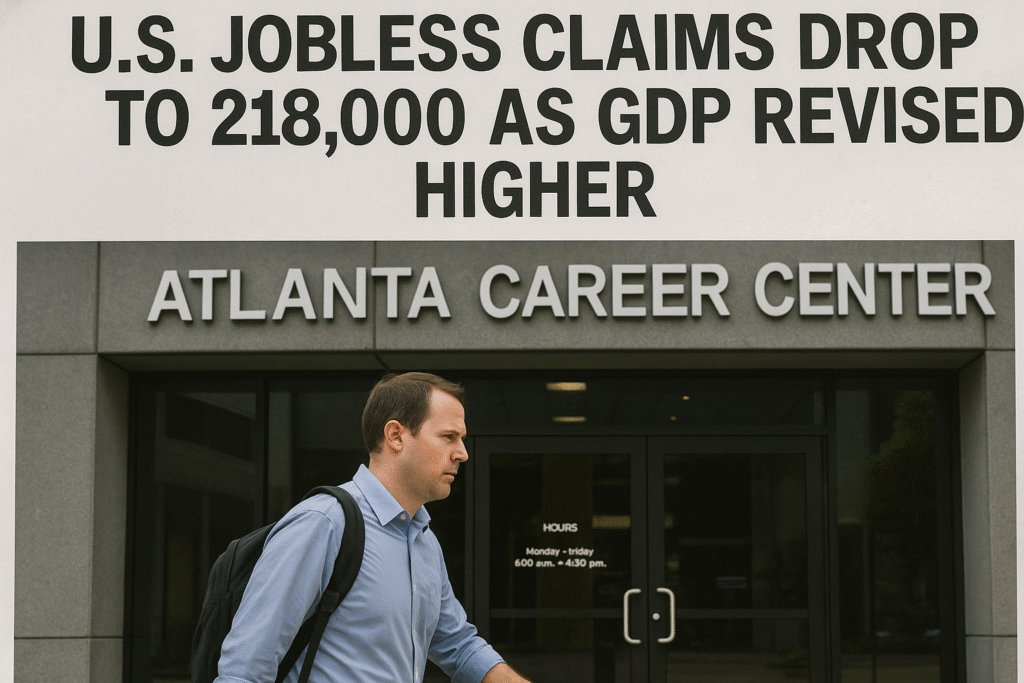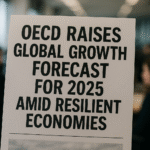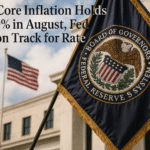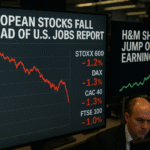By Harshit| September 27, 2025 | Washington D.C. | 5:45 AM EDT
The U.S. labor market showed unexpected strength last week as jobless claims fell well below expectations, while economic growth was revised sharply higher for the second quarter, offering fresh evidence that the economy continues to defy predictions of a slowdown.
Jobless Claims Fall Below Forecasts
Initial claims for unemployment benefits totaled a seasonally adjusted 218,000 for the week ending September 20, according to the Labor Department. That figure marked a decline of 14,000 from the prior week’s upwardly revised level and was well under the consensus forecast of 235,000.
Continuing claims, which measure the number of people still receiving unemployment benefits, edged slightly lower by 2,000 to 1.926 million.
The drop in claims comes at a pivotal moment for policymakers. Just a week earlier, the Federal Reserve lowered its benchmark interest rate by a quarter percentage point to a range of 4%–4.25%, citing “downside risks to employment” as a factor in its decision.
Although nonfarm payroll growth has slowed and job openings have slipped to multiyear lows, the claims figures suggest employers remain reluctant to cut staff. Some volatility has persisted, particularly in Texas, which saw claims fall by nearly 7,000 in the most recent report.
GDP Growth Surges on Consumer Spending
In a separate release Thursday, the Commerce Department reported that gross domestic product (GDP) expanded at an annualized pace of 3.8% in the second quarter, a substantial upward revision from the prior 3.3% estimate. The increase was largely driven by stronger consumer spending, which accounts for roughly two-thirds of the $30 trillion U.S. economy.
Personal consumption expenditures grew at a 2.5% rate, well above the earlier estimate of 1.6% and significantly stronger than the 0.6% pace recorded in the first quarter.
The revision underscores the resilience of household demand even as broader concerns linger about the durability of growth into the latter half of the year.
Durable Goods and Housing Add to Optimism
Fresh data on durable goods also pointed to momentum in consumer and business spending. Orders for long-lasting items such as airplanes, appliances, and computers rose 2.9% in August, sharply beating expectations for a 0.4% decline. Even excluding transportation, durable goods orders climbed 0.4% and were 1.9% higher when excluding defense.
Housing, often a weak spot in the post-pandemic recovery, showed renewed strength as well. Sales of newly built homes jumped 20.5% in August, the largest monthly increase since January 2022. Existing home sales also surprised modestly on the upside, reaching an annualized rate of 4 million.
Fed Outlook and Market Expectations
The latest figures reinforce the Fed’s delicate balancing act as it weighs inflation risks against signs of enduring economic strength. Chair Jerome Powell, speaking earlier this week, described the economy as “resilient in the midst of substantial changes in trade and immigration policies, as well as in fiscal, regulatory and geopolitical arenas.”
Still, Powell signaled that monetary policy remains “modestly restrictive,” leaving room for further easing if conditions warrant. Markets continue to anticipate two additional rate cuts before year’s end, likely at the Fed’s October and December meetings.
A Resilient Economy, But Caution Ahead
The combination of lower jobless claims, strong consumer spending, and a housing rebound suggests the U.S. economy retains momentum as the fourth quarter approaches. Yet economists caution that lingering uncertainties—from global debt pressures to geopolitical tensions—could test the durability of this resilience.
For now, the labor market and consumer demand continue to provide a solid foundation, keeping the U.S. economy on track for steady, if uneven, growth.







